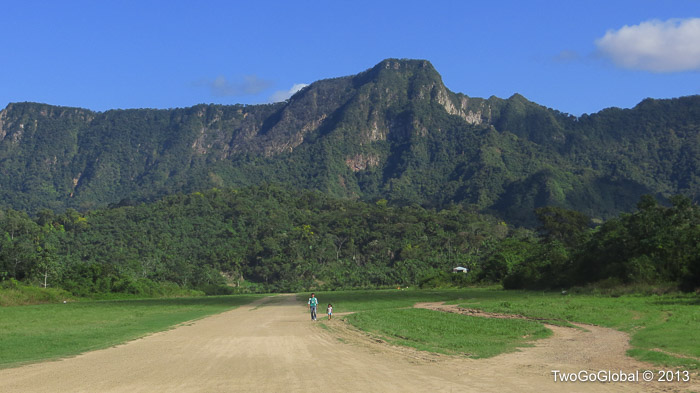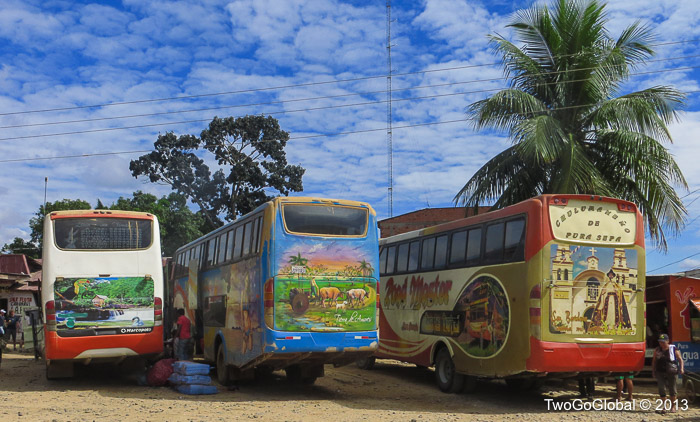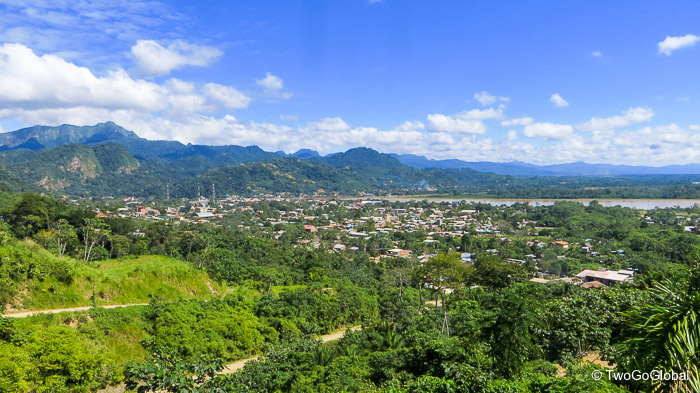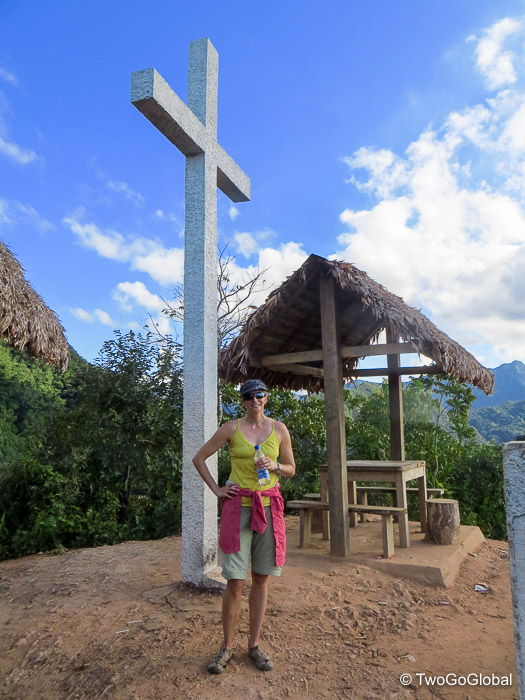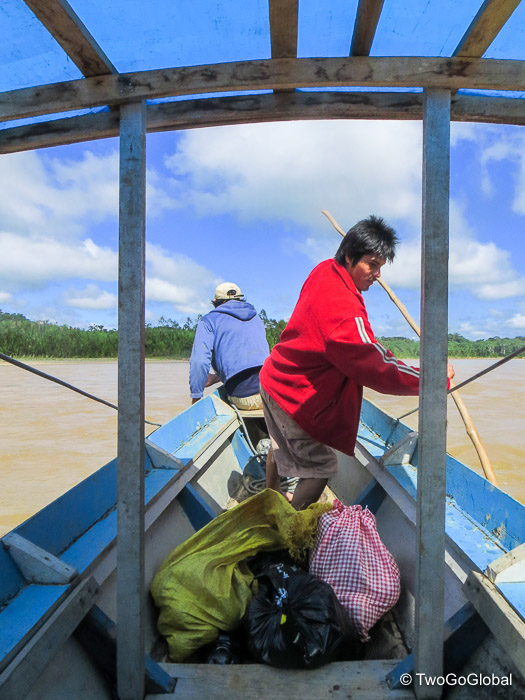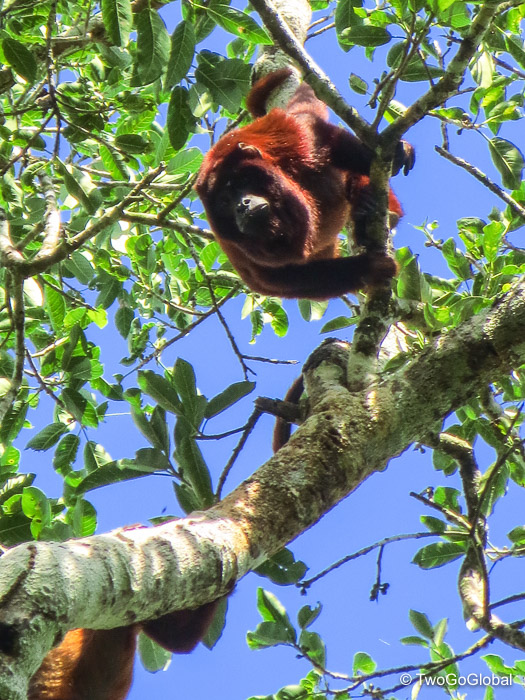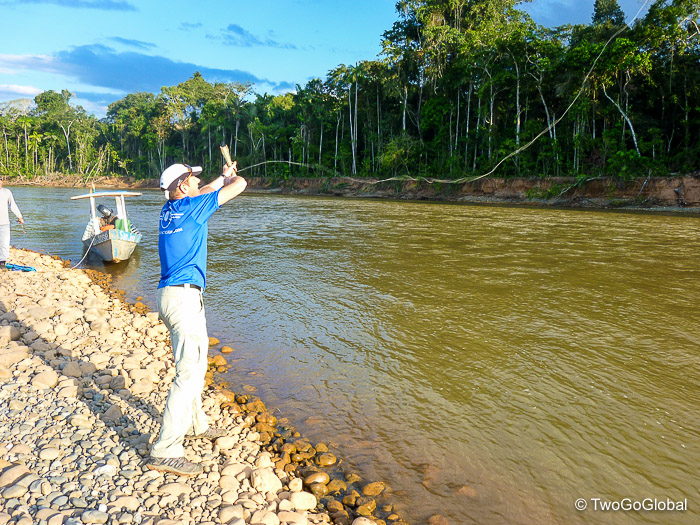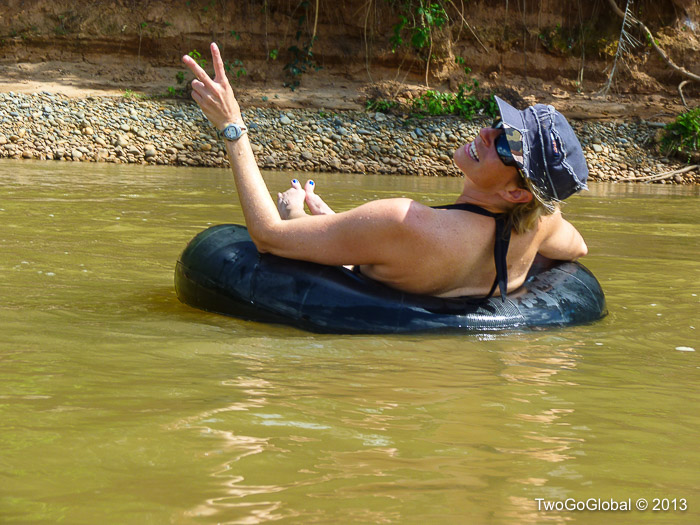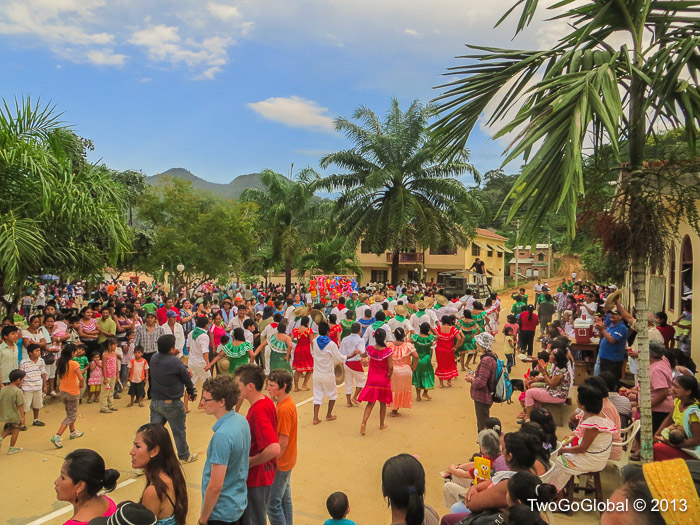The town of Rurrenabaque, known as the gateway for all Bolivian Amazon adventures was a last minute decision, preferred over heading to Chiles San Pedro de Atacama for a week. Andrea was still on vacation from work for another six days and we knew our destination, the Madidi National Park was going to be more than a long weekend. For that reason we decided to fly here from La Paz after arriving that same morning on the overnight bus from Uyuni. A three hour flight delay later we were landing on what appeared to be a remote landing strip in the middle of the Amazon, with the steep foothills of the Andes and endless rain forest everywhere. We were shuttled to the very small airport building where we collected our luggage and were met by Raul, our guide from Madidi Jungle Ecolodge.
Rurrenabaque, or Rurre as the locals call it is only 250 miles from La Paz, but the road conditions ensure it can take eighteen hours by bus or a thirty minute flight – obviously we took the latter! It lies on the east bank of the Beni river in the Beni Department, and its frontier neighbor, San Buenaventura in the Department of La Paz, a mere five minute boat ride across the river was to be our gateway to the Madidi National Park. There are tour operators galore scattered across every road, all vying to sign travelers up for a multiday trip to their ecolodge of choice in either the rain forest or the pampas. They are two very distinct areas and as we had already spent many days in the Brazilian Pantanal we opted for the rain forest. In my opinion the word ‘ecolodge’ was thrown around far too easily and many of the operators probably had no idea what it meant, used merely just as a marketing ploy! Once again, from Tripadvisor we selected the highly recommended Madidi Jungle Ecolodge, located three hours by boat up the Beni and Tuichi rivers.
Raul was prompt on the day of our departure into the jungle, but first we had to take the lodges private boat across the Beni to San Buenaventura to pay the entry fee into the Madidi National Park. The cost was minimal and we were soon heading off sandwiched in a canyon towards the lodge. The first hour and a half was on the River Beni which was plenty deep enough and easy to maneuver around the tree branches caught on the river bottom. The difficult section came when we turned onto River Tuichi with a stronger current and a very shallow depth to the degree that the driver’s assistant had to plunge a stick into the water to continuously check the depth and push us along when it was too shallow for the motor. Bearing in mind that this boat was closer to a dugout canoe, then add in supplies and a couple of workers heading to the lodge and it became a little low in the water!
Madidi Jungle Ecolodge is owned and run by an indigenous community from San José de Uchupiamonas much like the longer established and more recognized Chalalan Lodge a couple hours farther up the river. We knew that it would be a rustic experience, and that the money we paid would go straight into the community for continuous improvement of the lodge and to support the families. Not to the Marriott or Hilton families!
It was great to be the only guests at the five cabin lodge for the first night where the only man-made noises we heard were a few workers laying a new floor and the sound of the generator in the evening. The surrounding jungle was alive with the sounds of birds and very noisy insects. With Raul as our guide, we were able to experience some of the forty kilometers of trails in the vicinity of the lodge including the occasional surprise visitor.
On our first jungle hike we were lucky to see a herd of fifty to a hundred white-lipped peccaries rustling through the undergrowth. They communicate by moaning and a teeth chattering noise with loud barks the moment they become alarmed. A few minutes later we had a giant anteater walk onto the trail right in our path – I was a little way back and thought Raul said “jaguar” and not “giant anteater” and in the excitement all I managed to get was a single very blurry shot. I’m certainly not lucky with these amazing looking creatures as the first time we saw one from our vehicle in the Pantanal, the camera battery was flat and this time the excitement overwhelmed me. Next time we go to the zoo! To top the day off, in the trees above us there were beautiful Bolivian red howler monkeys very similar to the black and the mantled howler monkeys we had seen in other parts of South America.
The Madidi National Park is also home to jaguars, sloths, spider monkeys and many other animals that of course we once again didn’t get to see! The jungle is so dense in places that we were lucky to see anything at all and other travelers we had spoken with had barely seen birds!
One of the highlights for the weekend was fishing for piranha and pacu, both excellent eating and abundant in the rivers and streams around the lodge. Twenty minutes up river on a smaller stream we caught our first piranhas with only two carrying enough meat to make it worthwhile for cooking. Andrea is not the angling type, at least not until she landed her one and only piranha which was definitely destined for a pan. The other fish would be used as bait for the bigger pacu which inhabit the bigger faster flowing river, but on this day remained elusive to us!
What didn’t remain elusive were sand flies, something we had no idea could cause so much discomfort – we were both covered in bites from these tiny critters which sat nicely alongside the mosquito and ant bites. And oh boy did they itch. A week later we still have the bumps but without the irritation. To make things worse and I’m still not sure why she did this, but Andrea had to go one step further and attach the back of her neck to a tick, something she found the day after we got back to Rurre. Don’t they carry Lyme disease? Ummm, watch this space!
July 9th – July 14th 2013

